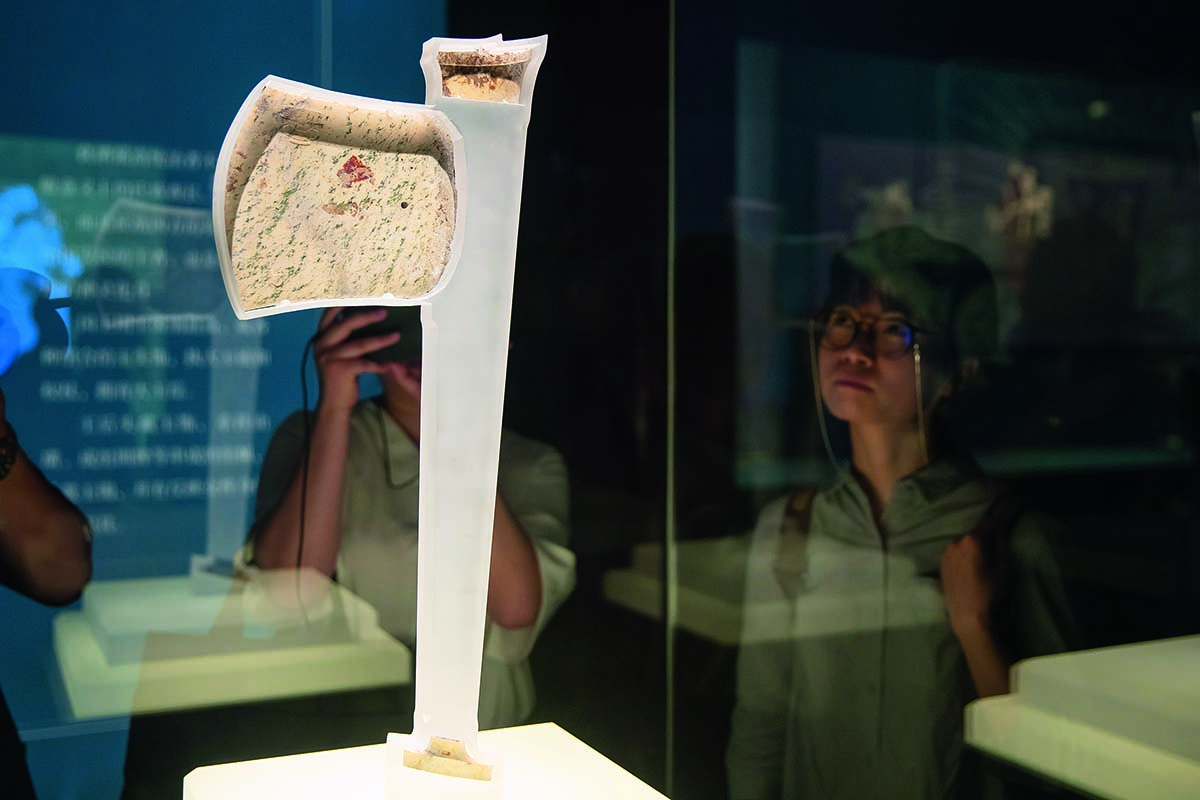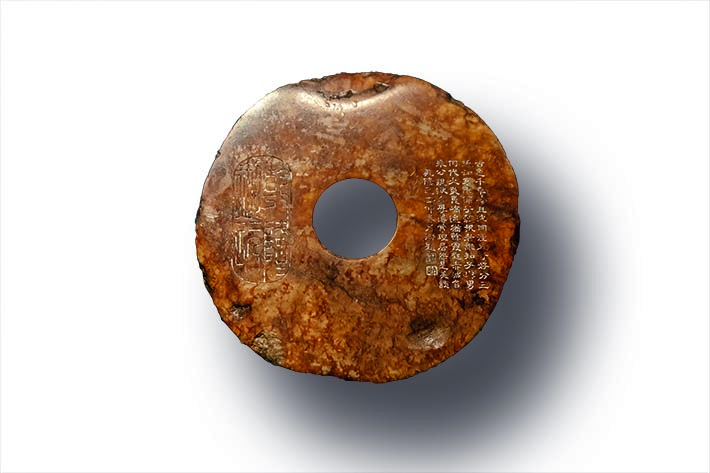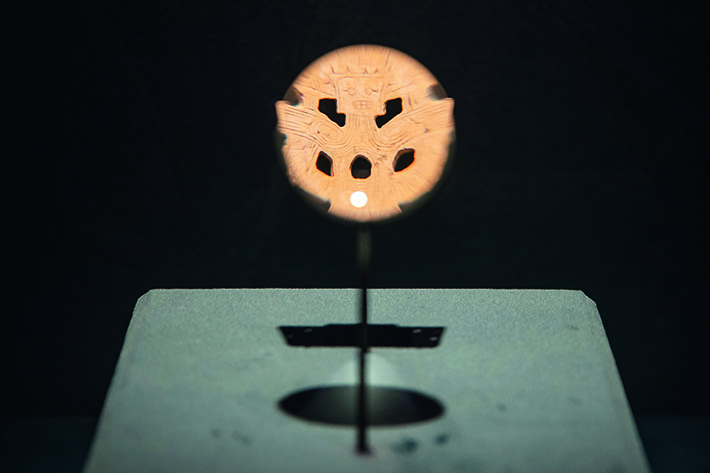Liangzhu: 5,000 Years of Chinese Jade

An exhibition titled “Liangzhu and Ancient China: The 5,000-Year Civilization Demonstrated by Jade” kicked off at the Hall of Martial Valor in the Palace Museum in Beijing on July 16, 2019. Featuring 260 items from 17 museums and archaeological institutes in China, it is the first exhibition of Liangzhu jade relics since the Archaeological Ruins of Liangzhu City was named a UNESCO World Heritage site.

The Liangzhu culture was first noticed by archaeologists in 1936, when the Archaeological Ruins of Liangzhu City were unearthed in Yuhang District, Hangzhou, Zhejiang Province. Archaeological findings over the past eight decades have shown that the ancient city of Liangzhu boasted advanced rice farming and handicraft industries, magnificent palaces and ancient city relics, as well as the earliest water conservancy system in the world. The discovery of Liangzhu City, the political center of the Liangzhu culture, provides unparalleled evidence for the development of an early civilized nation. It shines light on the great achievement of prehistoric rice-cultivating civilization of China over 5,000 years ago and provides an outstanding example of early urban civilization.
Liangzhu jade relics are one of the most important pieces of evidence for the formation of the ancient ritual system of Chinese civilization. Zhang Zhongpei (1934-2017), former director of the Palace Museum and a prestigious archaeologist, once pointed out that excavated jade objects are essential to the heritage value of the Liangzhu archaeological site. Liangzhu jade pieces are regarded as the pinnacle of prehistoric jade culture because of their large number, broad categories and delicate designs. Large quantities of jade pieces are commonly buried in graves of kings and nobles, which shows off the majesty of kings and the division of labor between male and female nobles. Class differentiation and spiritual beliefs of a prehistoric society can be drawn from the strict hierarchical use of jade objects, which was absorbed and practiced to varying degrees by later generations.

The exhibition has many highlights. First, it offers an unprecedented number of exquisite Liangzhu jade pieces from a wide range of regions and types. Second, the age range of pieces stretches from the Liangzhu culture in the Neolithic Age to the Ming (1368-1644) and Qing (1644-1911) dynasties, allowing visitors to trace the early characteristics of Liangzhu civilization and its influence on later cultures in a complete and systematic way and interpreting the important contribution and unique role of the Liangzhu culture in the construction of Chinese civilization scientifically and comprehensively. Third, exhibits outline the process of archaeological research and preservation of the ancient ruins of Liangzhu, and guide the audience to think empirically about Chinese civilization from 5,000 years ago and understand present-day efforts in cultural heritage protection and research. Fourth, it includes the most recent archaeological achievements related to the Liangzhu culture such as semi-finished jade products and tools unearthed from Deqing ruins in Zhejiang Province.
Jade Relics of Chinese Civilization
--Interview with Liu Bin, Director of the Zhejiang Provincial Institute of Cultural Relics and Archaeology

China Pictorial (CP): Why was the Liangzhu exhibition held in the Palace Museum first after Liangzhu ruins were recently named a World Heritage site?
Liu Bin: The Palace Museum has been tied to the Liangzhu site for a long time. The successful inscription of the Archaeological Ruins of Liangzhu City on UNESCO’s World Heritage List provided a great chance to organize an exhibition and make it more significant.
The Palace Museum, also known as the Forbidden City, is in Beijing, the capital of China. As the imperial palace of the Ming and Qing dynasties, the Forbidden City represents a culmination of 5,000 years of Chinese palace architecture. Correspondingly, the ancient city of Liangzhu was an ancient capital 5,000 years ago. Both are representative symbols of outstanding Chinese traditional culture. The design of the ancient city of Liangzhu is also very similar to that of the Forbidden City. It is very interesting because, to some extent, this exhibition reflects the 5,000-year history of Chinese civilization.

CP: The successful inscribing of the Liangzhu archeological site onto the World Heritage List testifies to the international community’s recognition of 5,000-year-old Chinese civilization. What distinct features does this exhibition have, and what is it intended to share with foreign visitors?
Liu: The Liangzhu ruins consist of a large-scale ancient city, a complex water system, hierarchical cemeteries (including altars) and other relics. This exhibition selected a large number of exquisite jade objects unearthed from the two most important tombs in the Liangzhu ruins (namely, Fanshan No. 12 Tomb and Yaoshan No. 11 Tomb) to shine light on the nobility of kings in the Liangzhu culture, the division of labor between male and female nobles, and the concepts of sovereignty and divinity.
The complexity of social development in most ancient civilizations discovered in foreign countries was determined through metal production. Foreign patrons will learn from this exhibition how important jade is to Chinese civilization. Jade relics are not only noble ornaments of Liangzhu civilization, but also reflect the spiritual beliefs of Liangzhu people.
CP: What are the most distinctive works on display?
Liu: This exhibition is the first to display jade objects unearthed from the Liangzhu ruins alongside Liangzhu pieces collected from various dynasties. The two most important Liangzhu jade objects on display are probably the “king of cong” (jade tubes with quadrilateral exteriors) and the “king of yue” (jade axes), which are both now in the Palace Museum.
The “king of cong” was unearthed from the Fanshan No.12 Tomb. It is a jade item that forms a tube with a circular hole in the center and a square outer section. With designs of animal-faced divinities on its four corners, it is the biggest and most exquisite cong of the highest quality ever found. In the period of the Liangzhu culture, cong was a ritual instrument for communication between heaven, earth, man and god, which illustrates the cosmology and spiritual beliefs of Liangzhu ancestors. The “king of yue,” unearthed from the same tomb, is the only existing jade axe engraved with designs of animal-faced divinities and birds. As a king’s mace, it symbolizes power and dignity.

CP: Chinese archaeologists have studied the Liangzhu culture for more than 80 years. What mysteries are still unsolved? What efforts will be made for the exhibition and protection of the Archaeological Ruins of Liangzhu City?
Liu: We still have a lot of details to study, such as the impact of the Liangzhu culture on other areas and the source of jade mines. In 2016, the archaeological project of the Liangzhu ruins was listed as a major research project of “Archaeological China” by the National Cultural Heritage Administration. Many organizations in Jiangsu, Zhejiang and Shanghai are cooperating by sharing their findings to gradually crack unsolved puzzles with archaeological methods.
The Liangzhu site is unique globally for its complete preservation of artificial landforms. However, as typical earthen ruins, the ancient city offers insufficient attraction to ordinary tourists, and it is difficult to display to the public. It is difficult to help tourists completely understand ancient artificial landforms.
In addition to on-site displays, we can also use multimedia, virtual reality and other technologies to restore the ancient city. In the future, excavation sites will also become part of the display.